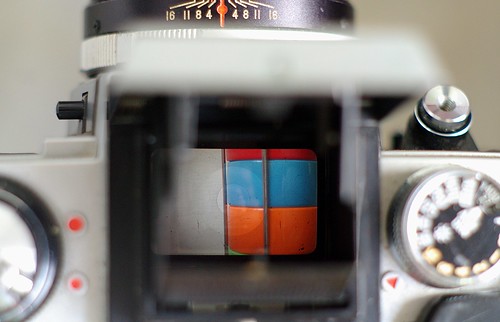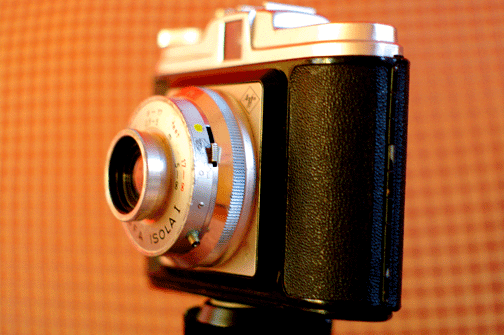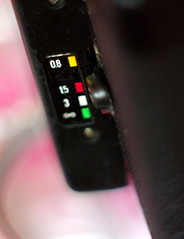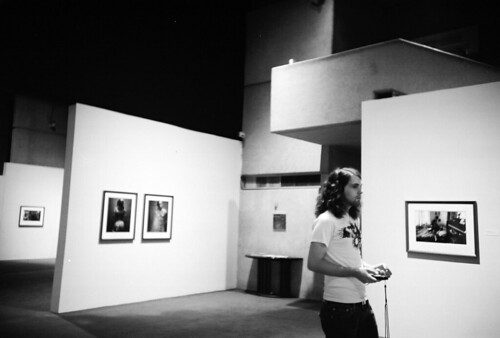Oh yes I DID just go there…
Oh, how the people on Flickr freaked out about this picture, because they thought I had this camera in too precarious a position…
I’ve found The One.
Maybe you’re thinking, “Amanda, I thought you found The One two years ago? You wrote that camera a love letter and everything!” That is certainly true, but, now that some time has passed, I know now that my affections for the Hasselblad were only fleeting. I’m not ruling out the possibility that one day I might rekindle that romance, but I’m just sayin… For now though, I have given my heart and soul truly to another: The Contax 645.
I think I love you!
Good ole Dirk pulled through again. He is the best matchmaker I know. He always knows just which cameras I’ll “click” with [yup, enjoy that pun for a moment.] I think I knew as soon as Dirk pulled the Contax out of his camera bag that something special was about to happen. And for the next few weeks, that Contax never left my side.
I don’t know if it’s fair to compare your current sweetheart to your exes, but I can tell you that the Contax fits my lifestyle and shooting habits much better than the Hasselblad. With the Hassy, there is no such thing as spontaneity. Every shot has to be set up, focused, metered, shutter cocked, then *THWACK* – you can make a photo. The Contax, however, is a perfect marriage between the quality of a medium format negative and the quickness of shooting with an auto focus 35mm cam. And that is coming from someone who really prefers using manual focus cameras!
You see, most auto focus SLR cameras give you the ability to switch between focusing methods. The problem with this is that you usually have to stop what you’re doing in order to switch the camera from auto to manual focus, or vice versa. The Contax 645 is much more clever than that, as it happens: Say you have the camera set to manual focus, but are having a bit of trouble focusing the lens correctly. There is a little button on the back of the Contax which temporarily puts you in AF mode, focusing the shot for you immediately. The best part is that this button is so easily accessible that you don’t even have to take the camera away from your eye, wasting valuable time, in order to change to auto focus mode. You can decide from shot-to-shot whether you want to focus the lens or if you want the camera to do the work for you. It’s so brilliant! That’s how I used the Contax during our time together. Talk about spontaneity!
Speaking of spontaneity: There’s also the small matter of the Contax having a built in exposure meter. I don’t want to make the Hasselblad feel bad about itself, but the lack of a meter was one thing that made me unsure of our ability to stick it out together for the long haul. I don’t own a proper hand-held meter, so I had to bring my Olympus XA everywhere I went to meter photos I was making with the Hassy. This is okay for making still life photos, but it’s less fun when you’re photographing people who have to wait on you to do this extra step before snapping their photo. Having an on-board meter is one thing that made me love the 645 oh so much!
I can honestly say that the 645 embodies a lot of qualities I value in a camera. Some of those features are as follows:
- I often say that a camera who wants to “hang” with me needs to have a rough and tumble disposition – The 645 certainly meets this requirement. It’s MOS DEF solidly built and it is HUGE. I think the technical term for a camera like this is “big, honkin’ camera.”
- The ability to take photos “on the fly” – Because I tend to do things in a more “documentary” manner, the more quickly I can get the shot, the better. Remember how I told you that I loved the ability to shift seamlessly between manual focus and auto focus? Yeah, that comes in handy for a gal like me.
- An unusual “look” – Not gonna lie: I am glad a lot of camera I use happen to look so different from the digital cams folks are used to seeing these days. That’s not the reason I use these cameras, it’s just an added benefit. Even people I don’t know can see me with a camera like the Contax, comment on how unusual it is, and open up the opportunity to do some of my aforementioned on the fly portraits.
- A kick-A lens – The standard lens that comes for the 645 is a friggin 80mm f/2 Carl Zeiss Planar T*. It. Is. So. Amazing. It rocked so hard that it melted my face off. Need proof of this? Take a look at what it did when Mallory and I did some portraits with the Contax and its 80mm Zeiss lens. I think my eyes nearly popped out of my head when I got that film back.
I’ve said all that to say this: I have been wanting to graduate to a medium format SLR for a couple of years now. After I got to spend some time with this Contax 645, I felt as if I had only scratched the surface for what I could do with a camera like that. And unless another camera turns my head in the near future, you can consider there to be a “watch this space” sign hanging over Shoot With Personality – a space which I plan on filling with images made with a Contax 645 of my very own!


































